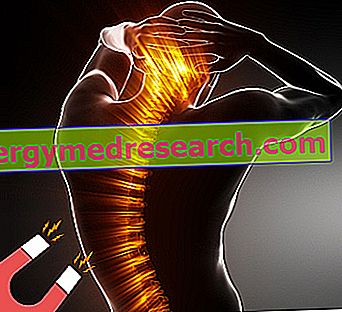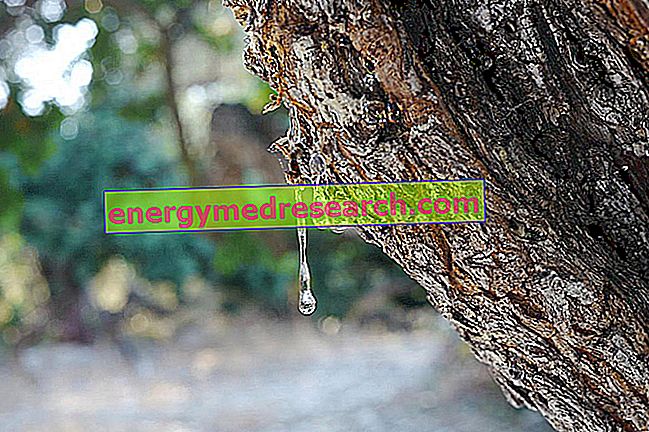Generality
Magnetotherapy is a practice of alternative medicine, which is based on the idea that exposure of the human body to magnetic fields has therapeutic effects.

Currently, according to official medicine, magnetotherapy is a practice devoid of any scientific foundation. In fact, there are many studies that have demonstrated its absolute therapeutic ineffectiveness.
What is magnetotherapy?
Magnetotherapy is a practice of alternative medicine, which involves the use of magnetic fields to treat certain health conditions.
Magnetotherapy promoters argue that exposure of parts of the human body to magnetic fields has beneficial effects on health, especially between:
- Those with bone fractures. Magnetotherapy would seem to accelerate the formation and consolidation of the so-called callus;
- Those with joint, muscle or muscle-joint pains;
- Those with skeletal diseases such as osteoporosis.
Magnets are needed for magnetotherapy, or rather for magnetic fields used for magnetotherapy.
operation
Premise: to better understand the supposed functioning mechanism of magnetotherapy, it is essential to review some notions of electrophysiology of the human cell.
The cells of the human body present an electric charge, the result of the presence, in the intracellular environment, of atoms with a certain charge (eg sodium ions, potassium ions, calcium ions, etc.).
The electric charge of human cells is different from the electric charge present on its exterior and this creates a situation, which electrophysiology defines with the term resting membrane potential .
The so-called resting membrane potential, therefore, is the difference in electrical charge, present between the inside and the outside of a generic cell.
Following cellular aging or after damage to the cell, the resting membrane potential undergoes an alteration, taking on values different from the values considered normal.
Alterations in the resting membrane potential are responsible for a malfunctioning of the cells and tissues of which these cells are part.
According to the creators and promoters of magnetotherapy, the magnetic fields used by the latter would act on the cells of the bone and soft tissues of the human body, favoring the restoration of the resting membrane potential where it is needed.
In other words, magnetotherapy would be a treatment capable of restoring the resting membrane potential in cells of the human body in which this potential is altered.
If all this were true - as stated by magnetotherapists - the cells that, thanks to magnetotherapy, restore their membrane potential at rest would resume functioning adequately, repair themselves more quickly in the presence of damage and so on.
This just reported is a deliberately simplified description of how magnetotherapy should act on the human body. In reality, however, the operation includes so many other, very complex aspects that only experienced people with a certain preparation would be able to understand.
The effects of magnetic therapy at the cellular level:
- Restore the resting membrane potential, in cells where the latter is altered;
- Interact with the blood hemoglobin iron, thus improving blood circulation;
- Restore the balance of the electromagnetic energy of the human body.
FREQUENCY OF MAGNETIC FIELDS
Magnetotherapy magnets can create magnetic fields of two different types: low frequency ( between 5 and 100 Hz ) or high frequency ( between 18 and 900 MHz ).
Magnetotherapy using magnets generating low-frequency magnetic fields is called low-frequency magnetotherapy ; on the other hand, magnetotherapy that uses magnets generating high-frequency magnetic fields is called high-frequency magnetotherapy .
The choice of frequency of magnetic fields depends on the health condition you want to cure. In fact, there are conditions that lend themselves better to low-frequency magnetotherapy and conditions that, instead, lend themselves better to high-frequency magnetotherapy.
The indications of low-frequency and high-frequency magnetotherapy will be discussed later.
DOES MAGNETOTHERAPY HAVE A SCIENTIFIC FOUNDATION?
No clinical-scientific study conducted so far has proven the effective efficacy of magnetotherapy.
Concerning some points very dear to the producers and promoters of magnetotherapy, the main criticisms are:
- The magnets used produce magnetic fields that are not powerful enough to have effects on muscles, blood, bones or other organs;
- There is no scientific evidence to suggest that magnetic fields would interact with iron from blood hemoglobin, improving blood circulation as a final effect.
In this regard, it is important to point out that iron is affected by the strength of a magnetic field only when it is in a crystalline solid form; therefore, if it is in molecular form, as in human hemoglobin, it does not respond to any stimulus of magnetic origin;
- There is no scientific evidence to prove the ability of the resulting magnets and magnetic fields to restore the so-called balance of the electromagnetic energy of the human body.
Indications
According to its creators and promoters, magnetotherapy would be particularly indicated in the presence of:
- Osteoporosis;
- Fractures and delays of bone consolidation;
- Osteonecrosis;
- Forms of arthritis, including osteoarthritis (or osteoarthritis), rheumatoid arthritis and periarthritis;
- nonunion;
- Carpal tunnel syndrome;
- Complex Regional Pain Syndrome;
- Joint rheumatism or joint pain;
- Fibromyalgia;
- Episodes of bursitis, tallonitis, epicondylitis, cervicalgia, lumbago or lumbosciatica;
- Cartilage lesions;
- Venous skin lesions, bedsores, burn wounds and edema;
- Arteriopathy of the lower limbs;
- Joint prostheses, to favor the consolidation of the latter after grafting.
- Orthopedics
- Traumatology
- Rheumatology
HOW TO USE THE LOW AND HIGH FREQUENCY
As anticipated in the previous chapter, low frequency magnetotherapy has different indications from high frequency magnetotherapy.
According to the creators and promoters of magnetotherapy, exposure to low-frequency magnetic fields would be useful in at least two circumstances:
- When it is necessary to favor the assimilation of calcium, to reinforce the skeletal apparatus and protect it from problems such as osteoporosis;
- When it is necessary to stimulate bone calcification, to speed up the healing time of a bone fracture.
As far as exposure to high-frequency magnetic fields is concerned, experts argue that this practice is particularly indicated when it is necessary to promote blood circulation and reduce inflammatory states, with the ultimate aim of alleviating the painful sensation.
So, in a nutshell, low-frequency magnetotherapy is used in patients with fractures, osteoporosis and diseases related to the latter, while high-frequency magnetotherapy is used in patients who complain of arthritis pain, cartilage lesions, algodystrophy, syndrome of carpal tunnel, muscle problems etc.
Equipment
A generic magnet therapy device includes: a computerized console, a couple of connection cables and two magnets .
The computerized console is the energy generator to be infused through the pair of cables to the magnets, so that the latter create the magnetic field.
Simple to use, the aforementioned console is also the tool that allows the therapist to adjust the frequency of the resulting magnetic field.
MAGNETS AND EQUIPMENT FOR THEIR APPLICATION
In general, magnetotherapy magnets have the appearance of rectangular plates and are provided with a Velcro portion. The velcro allows them to apply them on particular bands, which act as bandages of the anatomical area to be treated.
There are many types of bands, depending on the use to be made of them: there is a specific band to perform magnetotherapy on the neck, there is a specific band to perform magnetotherapy on the shoulder and so on.

Some magnetotherapy equipment manufacturers have made bands with magnets embedded inside; others have even thought of building a sort of magnetized blanket, which an individual can use during night sleep.
Characteristics of a cycle of sessions
Before a cycle of magnetotherapy sessions begins, the therapist interrogates the patient on age, height and weight and inserts the information obtained into the computerized console, through a specific typing path. At this point, leave the console computer's time to process the entered data and perform a sort of calibration, which will be fundamental when generating the magnetic field.
Then, at the end of the calibration, it will apply the magnets, in the anatomical region of interest, and press the button on the console, which serves to create the magnetic field.
Once the magnets are in action, the entire equipment works by itself, without any external intervention. The therapist, in fact, is called to intervene only at the end of the sitting time, when the patient needs help to remove the magnets and the bands of application.
HOW LONG DOES A SESSION HAVE?
Magnetotherapy sessions can last from 20 to 35 minutes .
According to experts in the field of magnetotherapy, in order for a session to be truly effective, it should last at least 30-35 minutes.
A CYCLE OF MAGNETOTHERAPY HOW MANY SEATS INCLUDES?
A cycle of magnetotherapy can include 10 to 30 sessions .
Those who have designed and promoted magnet therapy as a therapeutic practice believe that, for a cycle to be effective, it should consist of about thirty sessions.
Contraindications
Magnetic therapy is contraindicated, mainly, to two categories of individuals: the wearers of a pacemaker or a portable cardioverter defibrillator and pregnant women .
As regards the first circumstance, the contraindication is explained by the fact that magnetic fields, generated for therapeutic purposes, could interfere with the proper functioning of the electronic device, which is responsible for controlling the rhythm of the heart.
As for the second circumstance, the contraindication is based on the suspicion that the "usual" magnetic fields could cause fetal anomalies, thus compromising the normal development of the fetus.
Risks and complications
Magnetic therapy itself is a painless and essentially safe practice .
Results
Magnetotherapy has raised and still raises numerous debates among those who conceived it, which clearly defends its validity, and the scientific community, which, with reliable experiments, has demonstrated its therapeutic ineffectiveness and advises against its use.
On the subject, the FDA also expressed itself, that is the US government agency for the regulation of food and pharmaceutical products: its opinion is that magnetotherapy is a practice devoid of any medical-therapeutic utility.
What do doctors and scientists say about magnetotherapy?
- There is no scientific evidence that testifies to the therapeutic efficacy of magnetotherapy and magnetic fields;
- Magnetotherapy can lead to a delay in recovery from a certain medical condition, when a person prefers it to a treatment whose effectiveness has been demonstrated;
- Given the considerable cost of a cycle of sessions, magnetotherapy represents a threat to the financial resources of many patients.



